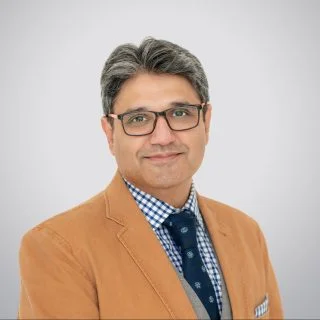Swallowing disorders are any type of discomfort or pain experienced when swallowing either food, liquids or saliver. Swallowing, which is a vital and complex function, involves the use of synchronized muscle movements which control the mouth, pharynx and esophagus. For specific swallowing disorders, such as Achalasia King’s offers advanced minimally invasive endoscopic procedures such as the POEM procedure.
Swallowing disorders, if not diagnosed and treated, can lead to malnutrition and severe weight loss because of insufficient intake of food and liquids to sustain the body. Although it is believed that swallowing disorders are most common in older adults, younger adults also suffer from the disorder, and sometimes it can go on without a proper diagnosis.
Types of Swallowing Disorders
Swallowing disorders can be categorized into two. These are:
- Dysphagia: This is a pain sensation that is experienced when any form of liquid or solid food is either wedged in the chest or regurgitated which can lead to chocking or coughing.
- Odynophagia – This is any discomfort experienced while swallowing.
Symptoms of Swallowing Disorders
Common symptoms of swallowing disorders include:
- Sensation of food feeling stuck in the chest (Dysphagia)
- Choking sensation
- Drooling
- Discomfort in the chest while swallowing
- Inability to swallow
- Regurgitation (food coming back up after swallowing)
- Gagging
- Coughing after swallowing
- Regurgitation into the nose (nasal regurgitation)
- Difficulty swallowing
- Pain while swallowing
- Weight loss
Causes of Swallowing Disorders
Causes of swallowing disorders include:
- Achalasia
- Gastroesophageal Reflux Disease (GERD)
- Ulcers in the throat or mouth
- Spasms in the esophagus (diffuse spasm)
- Scleroderma (scar tissue in the sphincter)
Swallowing disorders may also occur as a result of certain diseases including:
- Parkinson’s Disease
- Head, neck or esophageal cancers
- Stroke
- Cerebral palsy
- Neurological injuries
Diagnosis of Swallowing Disorders
In order to come up with the right treatment plan for swallowing disorders, a definitive diagnosis has to be made, which also includes finding the cause or any underlying conditions. During the diagnosis, the doctor (gastroenterologist) asks relevant questions about the patient’s medical history in addition to when and how the symptoms occur, likely foods that may be leading the patient to have difficulties in swallowing, as well as the timeline of the symptoms.
This aids the doctor in determining the type of swallowing disorder the individual may have, which allows him to order the necessary tests to determine the cause of the swallowing disorder.
These tests may include:
- Upper endoscopy: This is a common diagnostic procedure that examines the esophagus and stomach. An endoscope is a small flexible tube with a camera on one end that allows the doctor to see the condition of the patient’s organs.
- Barium esophageal: Barium X-ray tests are frequently used to diagnose swallowing disorders. During the procedure, the patient’s entire swallowing network is examined in order for the doctor to have a clear picture of its structure and function, in addition to any abnormalities that maybe present.
- Wireless pH Testing to monitor the individual’s reflux for one or two days.
Treatment for Swallowing Disorders
Treatment options for swallowing disorders include:
- Medication: These mostly help when the swallowing disorder is a result of certain conditions like Parkinson’s Disease, Hyperthyroidism or Hypothyroidism.
- Dilation with a gastric balloon: Dilation therapy expands the swallowing canal and is commonly performed during an endoscopic procedure.
- Swallowing retraining: This is done with the help of a speech therapist especially in cases that are neurological like certain types of neurogenic dysphagia.
- Stent placement in the esophagus: Although rarely performed, stent placement involves placing stents in the individual’s esophagus to widen it.
- Enteral feeding: Enteral feeding involves the use of feeding tubes to give the body the required nutrition for survival.
POEM Procedure – Advanced Therapeutic Endoscopy
Depending on the diagnosis and the underlying causes, surgery may be required to treat swallowing disorders. This is done mostly for patients suffering from achalasia whereby a procedure known as POEM (Peroral Endoscopic Myotomy) is performed.
POEM procedure, which is minimally invasive, uses endoscopic technology and it’s an inpatient procedure that normally takes between one to three hours to complete.
BOOK AN APPOINTMENT



